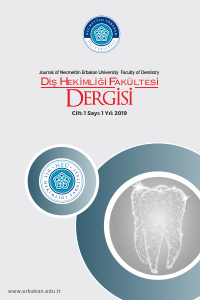
Necmettin Erbakan Üniversitesi Diş Hekimliği Fakültesi Dergisi
Yazarlar: Nimet ÜNLÜ, Sultan Gizem ÜLKÜ
Konular:Diş Hekimliği
Anahtar Kelimeler:Kompozit rezin restorasyonlar,In vivo ve in vitro araştırmalar,Klinik araştırmalar
Özet: In the process that started with the introduction of composite resins by Bowen in 1962, the increased aesthetic expectation of patients and concerns about amalgam have made composite resins the preferred material. As well as the advantages that composite resins being aesthetic, allow for conservative cavity preparation and can be repaired, there are disadvantages such as polymerization shrinkage, low wear resistance in use in functional tubercles. Various researches have been conducted on composite resins since the early 1960s and a composite resin material has been developed. It is aimed to eliminate the disadvantages of composite resins with the developed properties and researches in this field. However, the number of both in vivo and in vitro studies on composite resin has increased in the literature. In vivo studies in the literature include patient data such as age, gender, and the total number of patients examined, and data such as the materials used, the data of the clinical evaluation criteria of the materials, and the restoration survival are among the evaluated data of the study. In this article, in vivo and in vitro studies conducted in the literature on composite resin restorations and other restorative materials in 2010 and later are compiled and all data in these studies are examined and presented in tables.